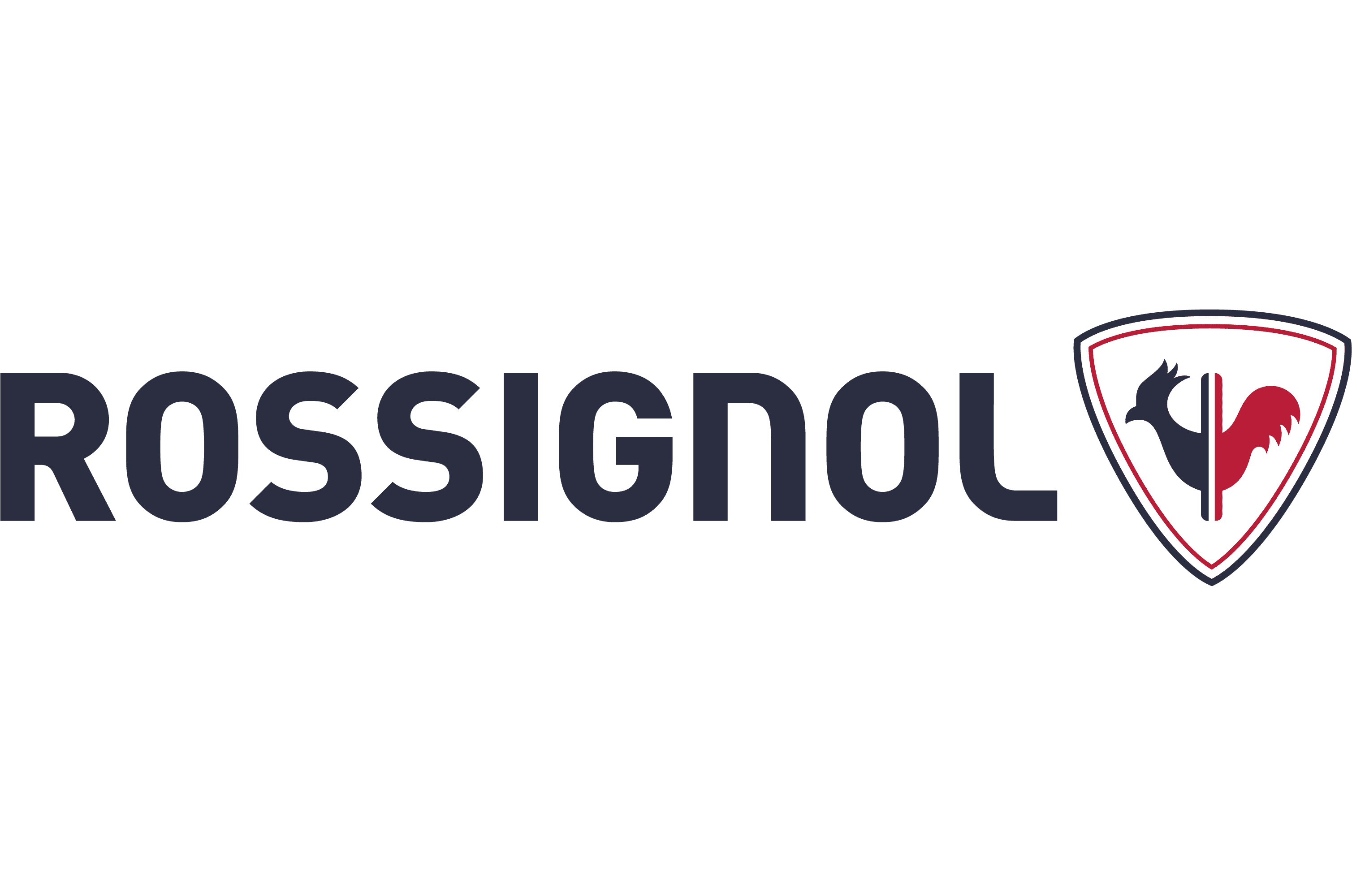 Logotipo de Rossignol PNG
Logotipo de Rossignol PNG
A pesar de que la palabra “Rossignol” significa “ruiseñor” en francés, el logotipo no oficial de la marca muestra un pájaro diferente. Sin embargo, durante gran parte de la historia de la empresa, el logotipo principal no mostraba ningún pájaro.
Significado e historia
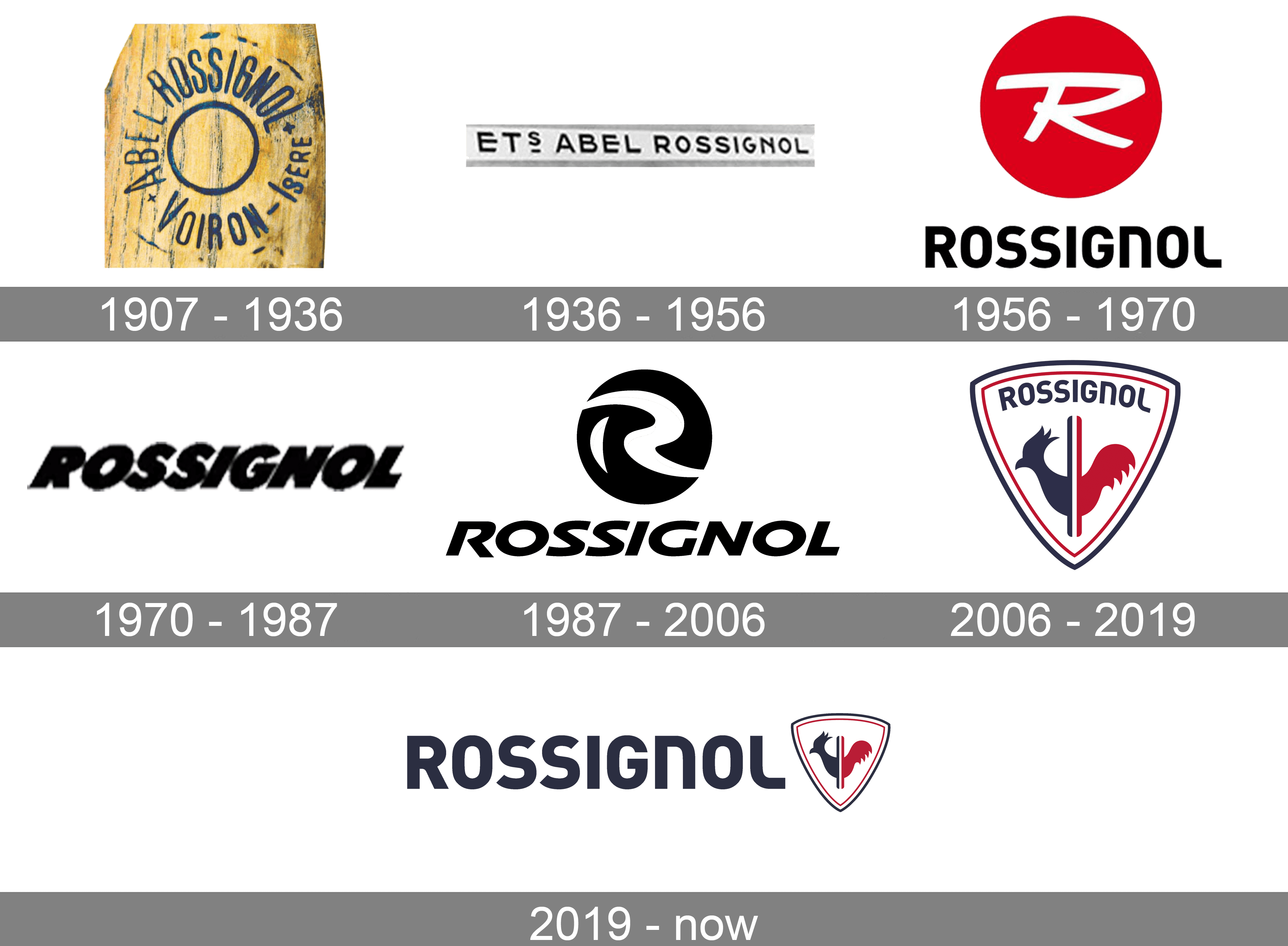
Rossignol es un conocido fabricante francés de esquís, tablas de snowboard y equipamiento para deportistas. La empresa fue fundada en 1907 por un carpintero llamado Abel Rossignol. Primero fabricó productos de madera para la industria textil y luego se dedicó a los esquís. Hoy en día, la marca que creó es reconocida como uno de los líderes mundiales en su segmento.
El éxito de la empresa llegó tras ganar un concurso para fabricantes de equipamiento deportivo organizado por el Touring Club de France. Inspirado por este logro, Abel añadió a su taller un taller de fabricación de esquís y trineos. También visitó Noruega y allí aprendió los secretos de los esquís caseros de los antiguos vikingos.
A su regreso a su país natal, separó la producción de esquís en un departamento separado, que eventualmente se convirtió en la primera fábrica de esquís especializada del mundo.
¿Qué es Rossignol?
Rossignol es una marca de ropa y equipamiento para esquí y snowboard de fama mundial. La marca es conocida no solo por la alta calidad de sus productos, sino también por el estilo y la elegancia francesa, que se pueden apreciar en cada pieza diseñada por Rossignol.
1907 – 1936
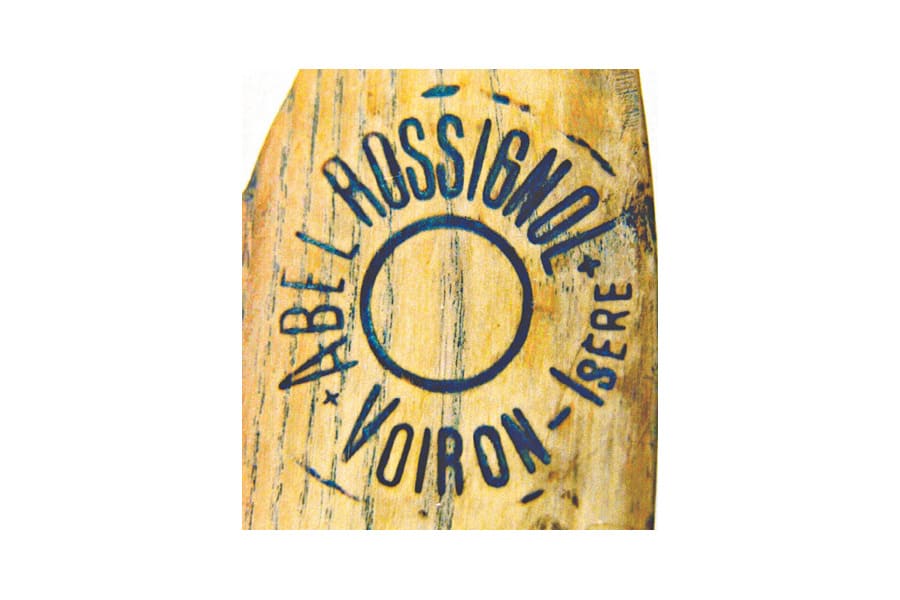
Rossignol es un fabricante francés de equipos para esquí alpino, snowboard y esquí nórdico. Fue fundado en 1907 por Abel Rossignol.
1936 – 1956
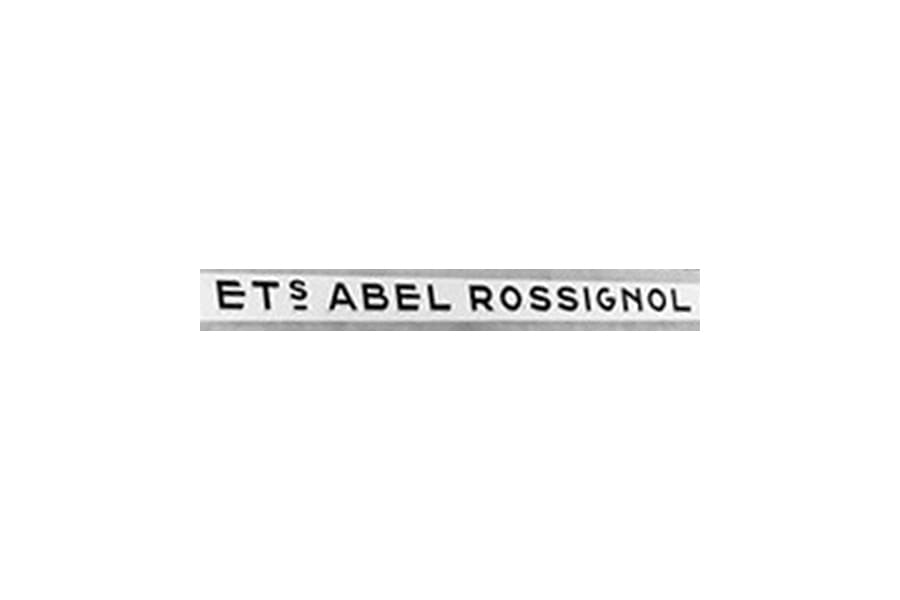
El logotipo que utilizó la marca en la década de 1930 era un sencillo pero potente y elegante logotipo monocromático que representaba el nombre del fundador de la marca, Abel Rossignol. Estaba escrito en mayúsculas con una tipografía sans-serif estricta y moderna sobre un rectángulo estrecho y horizontal de color blanco, sin marco.
1956 – 1970
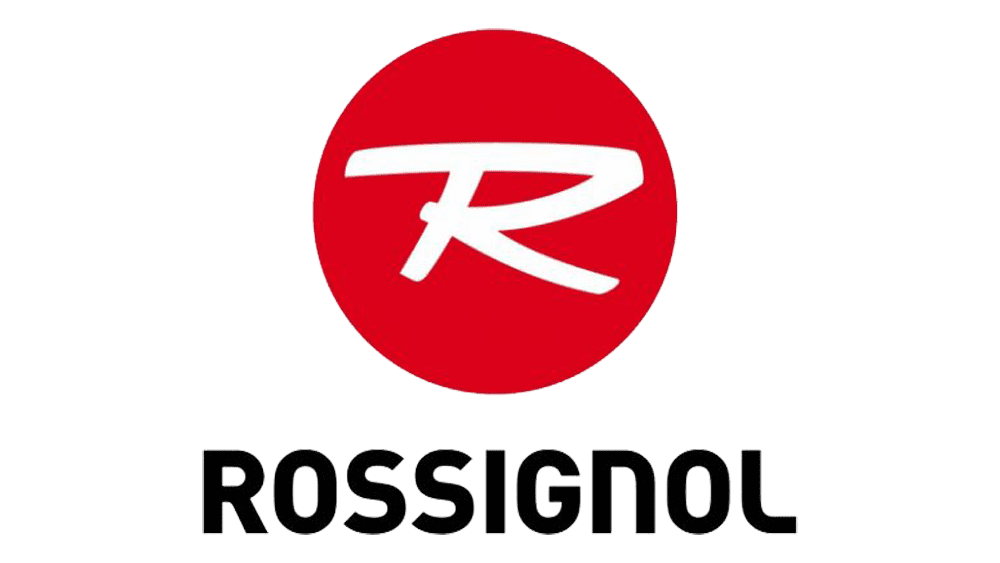
En 1956, se les ocurrió un emblema propio: un círculo rojo con una «R» blanca como si estuviera escrita a mano en el centro. Debajo, el nombre de la marca escrito en negro con letras mayúsculas suaves.
1970 – 1987

Después de otro rediseño, el logotipo de Rossignol comenzó a verse completamente diferente, aunque la paleta de colores monocromática permaneció con la marca. El nuevo logotipo constaba de dos partes: un emblema gráfico y un logotipo, colocado debajo. El logotipo se ejecutó en una tipografía sans-serif cursiva personalizada, con sus letras mayúsculas que parecían progresivas y fuertes. En cuanto al emblema, presentaba un círculo negro sólido con una «R» blanca estilizada escrita en él en líneas suaves y arqueadas.
1987 – 2006
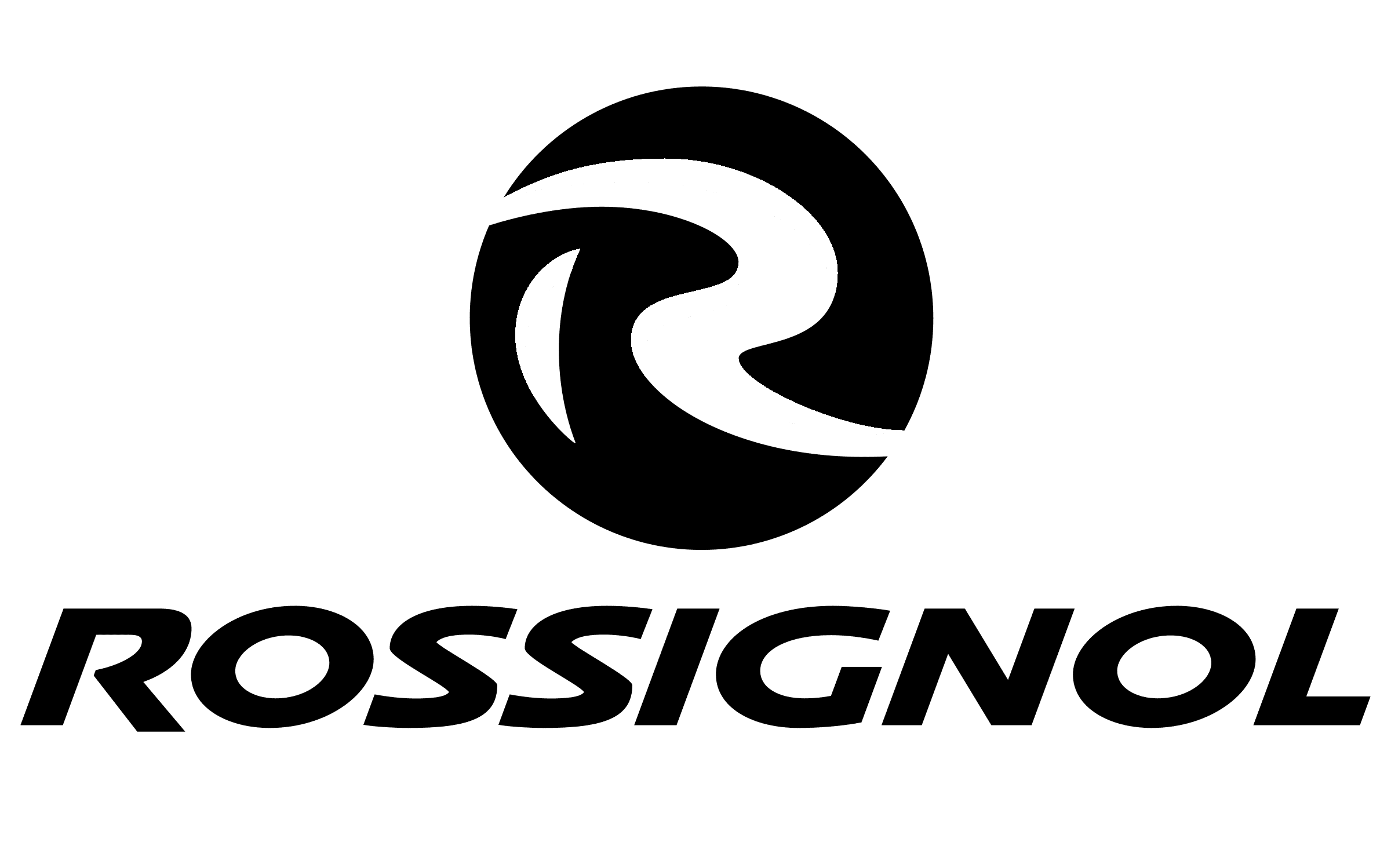
En 1987, decidieron volver al antiguo concepto de 1956, pero cambiaron el diseño. El círculo se volvió negro y ahora tenía una «R» más ilustrativa hecha con dos trazos anchos. Las letras debajo consisten en letras mayúsculas inclinadas escritas con una fuente suave pero nítida.
2006 – 2019
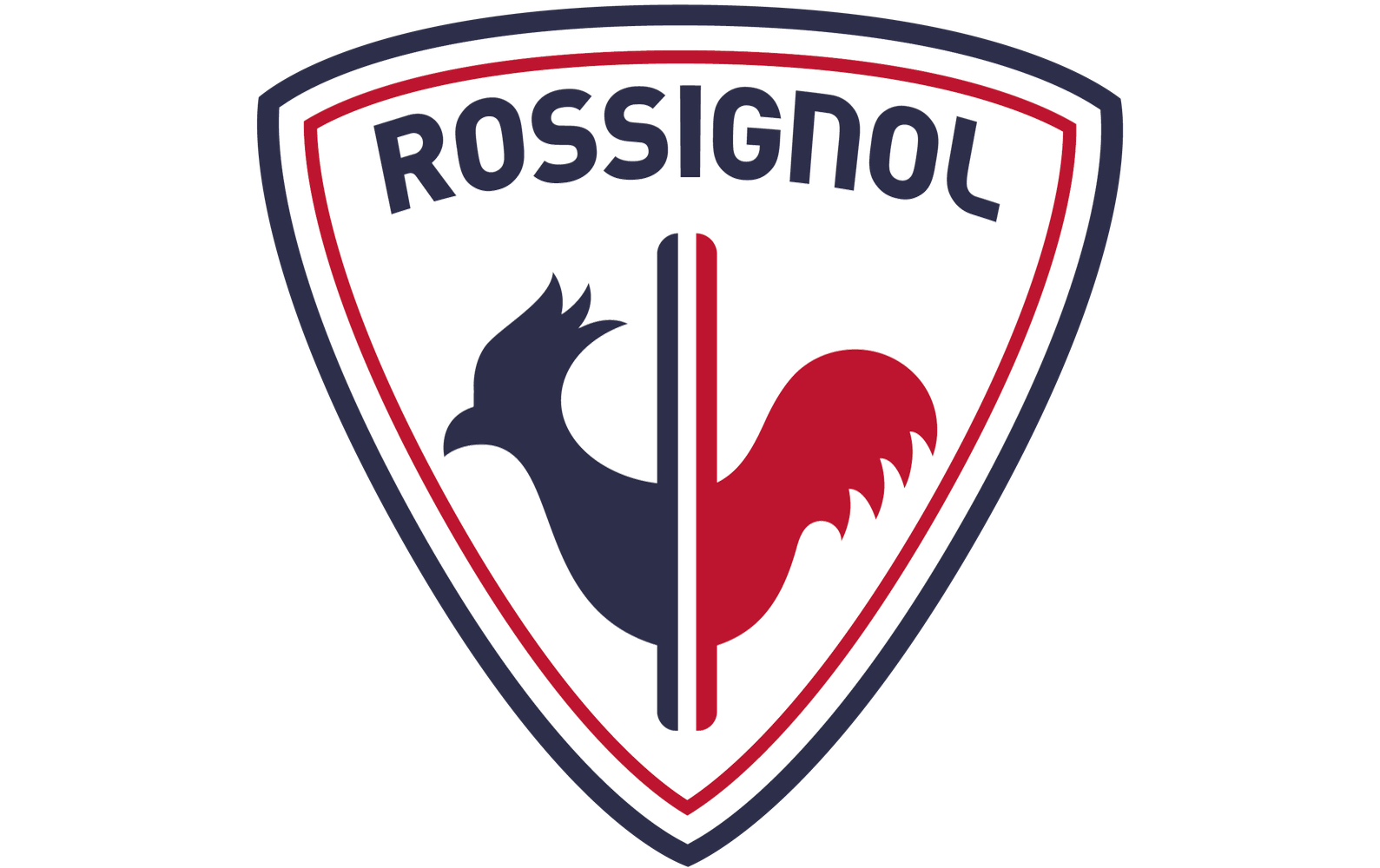
In 2006 the Rossignol logo was changed again. The new concept was built around the national French flag colors and the symbol of the country — the Rooster. It was drawn in blue and red and placed on a white background inside a triangular crest pointing down. The crest featured a double red and blue outline, which was balanced by the main symbol on the logo. A blue, white, and red vertical narrowed flag was coming through the rooster and finishing under the letter “I” of the logotype, which was arched along the upper border of the crest. The inscription in the uppercase was executed in dark blue color and used a modern and clean sans-serif typeface with smooth bold lines.
2019 – Today
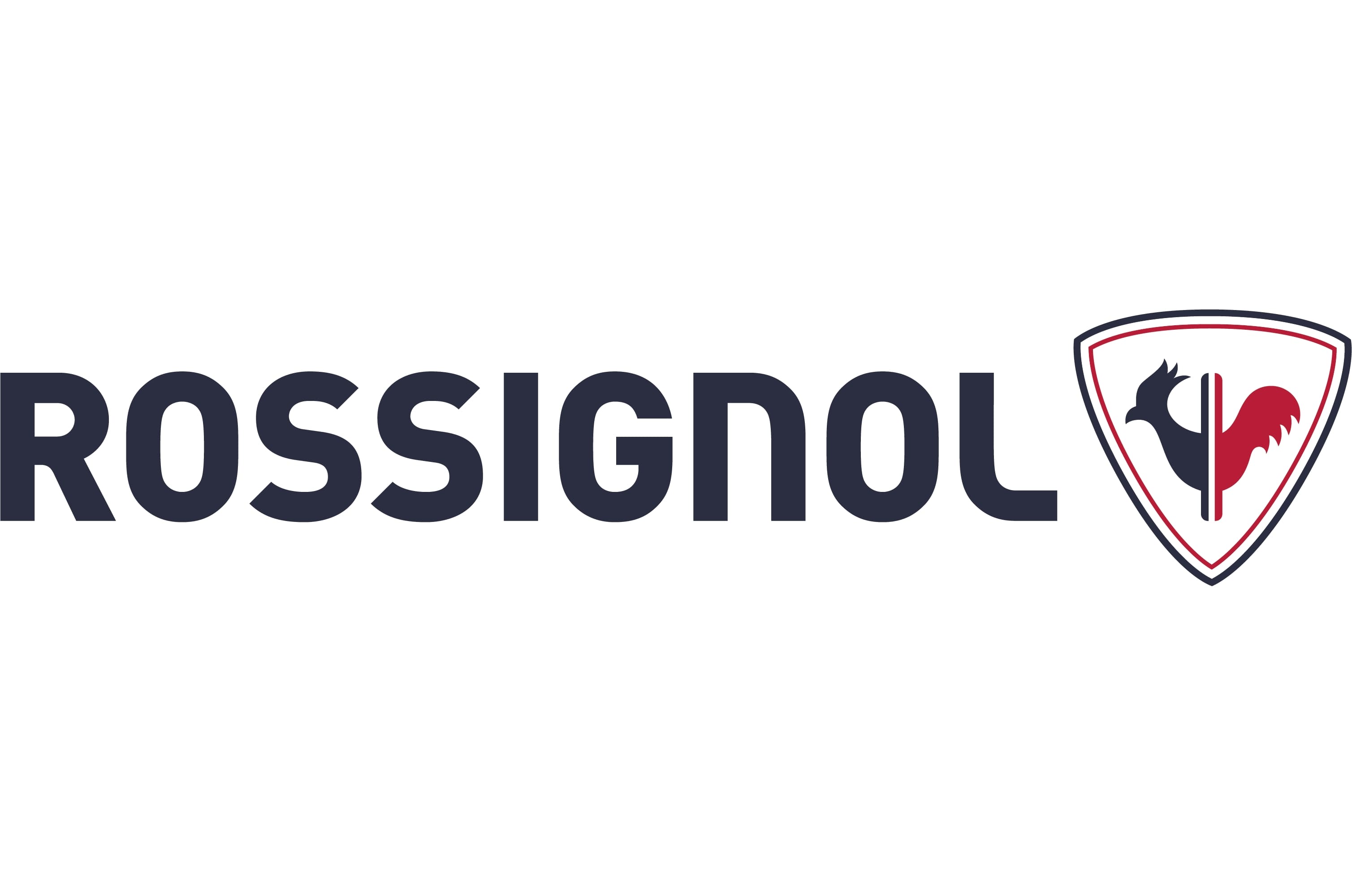
The redesign of 2019 removed the logotype from the crest and placed it on the left from the graphical emblem. The inscription was enlarged and became the main part of the brand’s visual identity. The typeface and color palette remained untouched, as well as the crest with the Rooster.
Rooster emblem
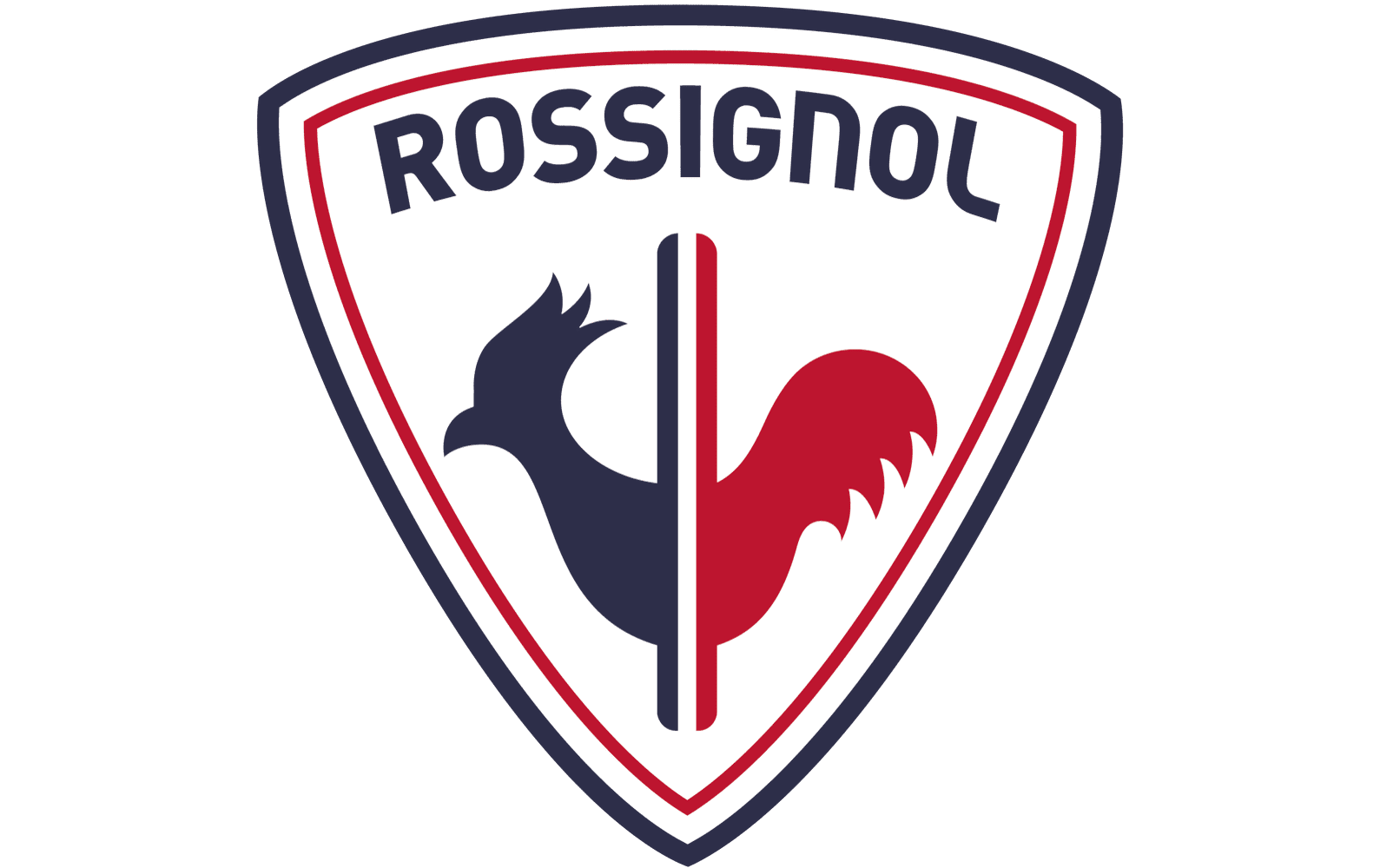
The name of the brand was not inspired by the bird but just used the second name of the founder. This can the reasonwhy the “nightingale” theme has never been supported in the Rossignol logo.
The most recognizable logo the company has had is probably the rooster. The bird is blue and red on the white background. The two stripes symbolize the skis. The V-shape used for the shield emphasizes the link with sport – the “V” is a universally recognized symbol of victory.
One more motif that has been used on Rossignol’s products quite often is a pair of parallel stripes. According to the company, this pattern was inspired by “the skis and the two tracks on the ski slopes.”
Colors
The palette of the Rossignol logo was inspired by the French flag, according to the company’s official website. In this way, Rossignol emphasizes the “sense of belonging to the French sporting community.” The combination of blue, white, and red looks slightly darker on the logo than it does on the flag, though.
The brand has often used a lighter shade of blue called Strato blue. The name refers to the legendary Strato ski, which was marketed from 1965 to 1975. It has been known as the first model to exceed the figure of a million pairs sold. The Strato ski had a blue base.
Font and Color
The sleek custom lettering from the primary Rossignol logo is set in the mixed case of a smooth futuristic sans-serif font, with all the characters featuring the same size. The closest types to the one, used in this insignia, are, probably, DIN 2014 ExtraBold, or Uni Neue Heavy, but with some modifications.
As for the color palette of the Rossignol visual identity, it is based on the iconic blue, red, and white tricolor, the scheme of the national flag of France, with the blue and red a hit darkened up and muted. These new shades of the familiar palette make the badge look extremely stylish and sleek.

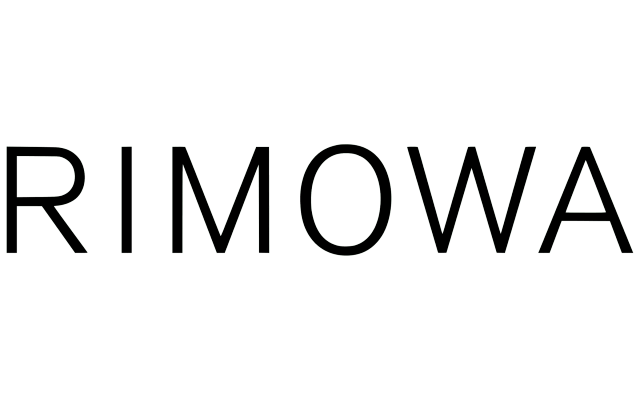

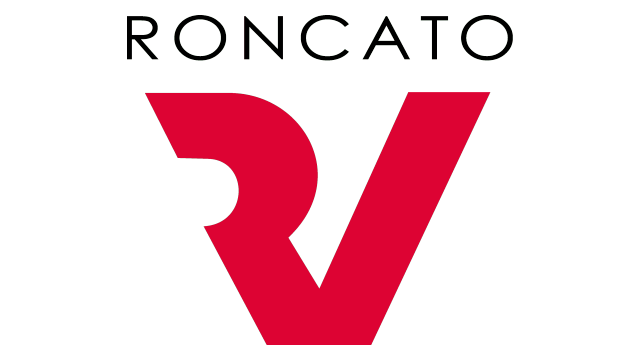






Deja un comentario